Inveraray, a small town located on the edge of Loch Fyne, is forever linked to the Dukes of Argyll and the Clan Campbell.
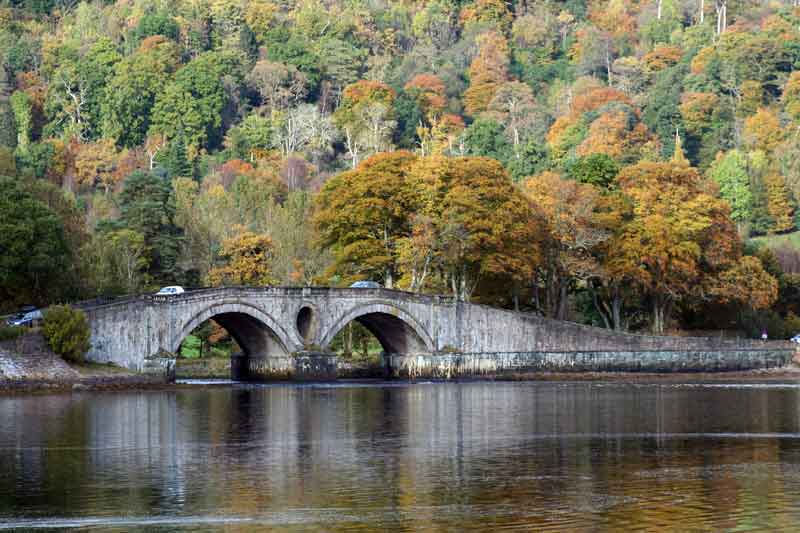
Today with that link, still strong and active, Inveraray is a tourist destination.
Its 19th century jail, now a living museum and Maritime Museum are popular attractions.
The All Saints Bell Tower which has the second heaviest ring of ten in the world is one of the town’s most distinctive landmarks.
history of Inveraray & Clan Campbell
Since the first Earl of Argyll was created in 1457 until the Union of Parliaments in 1707, the Clan Campbell, perhaps more than any other Scottish clan, took an active role in the development and government of their country.
Although some historians will disagree, the name Campbell is thought to come from the Gaelic Caim Beul meaning crooked mouth, a reference to an early Campbell chief.
In 1648, Charles I made the town a Royal Burgh by Charles I, which meant that it had a member in the Parliament of Scotland.
Over two decades later in 1472, James III, created Inveraray a Burgh of Barony giving it the authority to hold a market, administer justice and deal with certain types of crime.
Argyll region
The name Argyll comes from the Irish Gaelic Aragaidheal meaning coastland or boundary of the Gaels.
The region’s earliest people were hunters and fishermen who lived entirely from the resources provided by land, sea and river
A modern interpretation of the Argyll region would be the Scottish local government area of Argyll and Bute.
Prior to the local government reorganisation of 1975, Argyll, on a map would have looked quite different.
University of Edinburgh professor, Donald E Meek said this:
“I think (and will for ever think!) primarily in terms of the ‘old’ county of Argyll, extending on the mainland from the Mull of Kintyre to Kinlochleven on the east of the Great Glen and to Fort William on the west side, and embracing the Inner Hebrides as far north as Tiree and Coll.
Donald E Meek
Kilmartin Glen, rich in archaeology
The area has a rich and important archaeological legacy, particularly at Kilmartin Glen, only a few miles from Inveraray. There, some of the most important archaeological treasures in Britain were found.
These remains have allowed a real insight into early life in Argyll.
The Nether Largie Stones, dating to around 3,000 BC, are just one example of over 150 ancient cairns, graves and standing stones.
Retreating further into history, the ancient kingdom of Dalriada, home to the original Scots, who probably came from the northeast of Ireland, grew to cover much of modern Argyll.
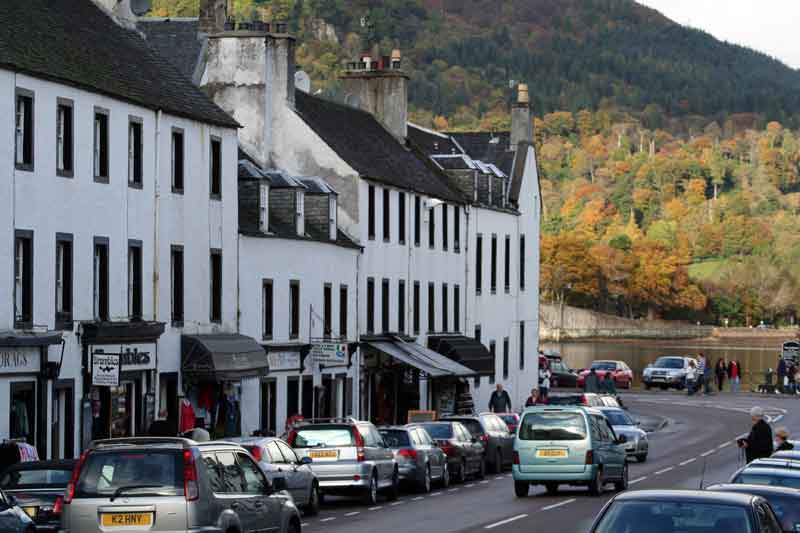
Dunadd
Dalriada’s hill-fort capital Dunadd, only a short distance from Inveraray, was, between 500-900AD one of the most important places in Scotland.
For a Campbell, tracing their ancestors can be an uncertain art, for at times they have claimed a Dalriadic descent, a Norman origin, a mythical Celtic founder and an ancient British source.
When looking for the Campbell’s first foray into Argyll, historical records mention tradition, legend and myth.
It is in that vein that writer and historian Donald Omand said,
“Tradition often claims, probably correctly that the Campbells came to Argyll as part of a royal army bent on bringing this fringe area into the ambit of the Scottish crown.”
Donald Omand
He also argues that an exploration of early Campbell history would suggest that one Archibald Campbell also known as Gillespie or Gilleasbaig of Menstrie was, in 1263, the first Campbell to be recorded.
Archibald was the father of Sir Cailean Mor Cambel of Lochow, (Colin the Great) knighted by King Alexander III was the first Campbell to bear this Christian name.
As Colin grew in importance in the region, he added through marriage, substantially to his estate.
He took the patronymic name of MacCailein Mor, a title that subsequent chiefs, including the present Duke of the Clan Campbell were given.
In 1296, in the violent and uncertain times of medieval Scotland, he died after being shot in the back during a fight with the MacDougalls of Lorne.
His son Sir Neil Campbell astutely favoured his cousin Robert the Bruce in his bid for the Scottish throne.
That support came at the expense of the MacDougall Lords of Argyll, who were followers of English ambition in Scotland and Bruce’s main rival John Balliol.
Sir Neil died in 1315, the year after Bruce’s great victory at Bannockburn.
It was his son Cailean Og (Young Colin) who was rewarded by, not only the granting of lands forfeited by the MacDougalls but also with a new charter giving him the Lordship of Loch Awe and Ardscotnish.
Before the 12th century, it was difficult to pinpoint the location of the Campbell’s base in Argyll.
Later it’s generally agreed it was the fortress of Innis Chonnel built on a small island in Loch Awe, only a few miles from the present Campbell castle in Inveraray.
However, the author of the History of the Clan Campbell, Alistair Campbell disagrees, arguing that it was Caist na Nighean Ruaid on Loch Avich that was the first castle of the Clan.
Putting aside any disagreement as to the location of the original home, it’s known that they moved from their island home the short distance to Inveraray,
That was certainly after the time of Robert the Bruce and probably sometime in the early 1400’s.
The Campbell’s fortunes continued to improve with new titles and lands coming to the family. In 1457, the king created Colin Campbell the 1st Earl of Argyll.
Backing a political winner, then as now, was essential for survival.
Unsurprisingly the Campbell Clan consistently supported the Royal House of Stewart following the demise of the dominant Lordship of the Isles at the end of the 15th century.
The history of Inveraray & the Glencoe Massacre
The story of the Glencoe Massacre, and the role the Campbells played in it, is perhaps one of the best-known, yet least glorious of Scottish stories.
The town of Inveraray played a central role.
King William demanded that all Scottish clans sign an oath of allegiance to him before the 1st of January 1692.
Each clan chief was to make the journey to Inveraray and sign the oath before a magistrate.
It was unfortunate, to say the least, that MacDonald clan chief MacIain of Glencoe went to Inverlochy near Fort William.
Realising his mistake he hurried to Inveraray, arriving on the 6th of January, but it was too late. The rest of course is history.
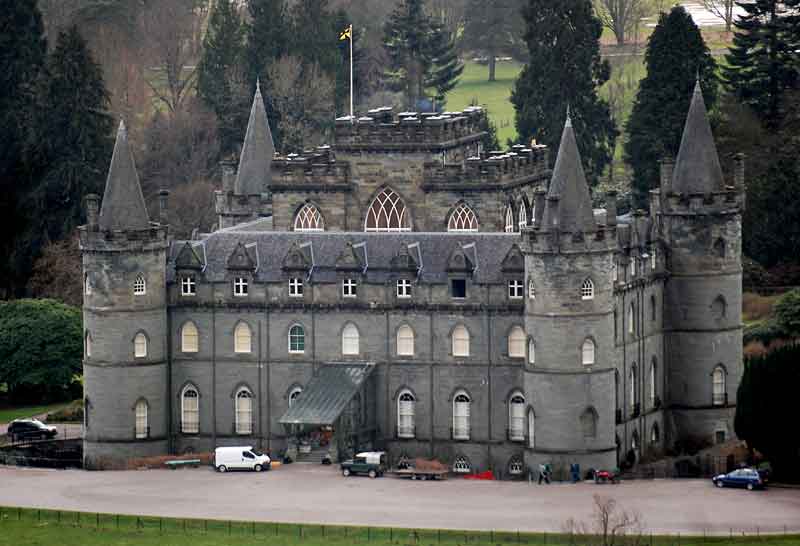
While the Clan Campbell will be forever associated with and blamed for the massacre at Glencoe, it’s worth reflecting on the part played by the king and other senior Scottish nobles.
Over the centuries the fortunes of the family mirrored that of Scotland.
Archibald the 2nd earl was killed along with King James IV and the cream of Scottish nobility at Flodden Field in 1513.
The 5th Earl, also Archibald was involved in the murder of Mary Queen of Scots’ husband Lord Darnley in 1567 and led Mary’s army to defeat, at the Battle of Langside the following year.
Afterward he changed sides switching his support to her son James VI. He subsequently became Scotland’s Lord Chancellor in 1572.
Of course, there are many other examples of Campbells who swayed in the political wind, changing allegiances when prudent.
Marquis of Montrose captured Inveraray
As powerful as they were, other Campbells were not always on the winning side.
During the years of the English Civil War which spilled over into Scotland, the Marquis of Montrose, during 1644, captured Inveraray Castle driving out the Duke.
The following year Montrose defeated a Campbell army at Inverlochy near Fort William.
As Scotland laboured under the disastrous effects of the failed Darien expedition and moved towards Union with England, the 10th Earl was granted the first Dukedom in 1701.
Communication and travel had for centuries been difficult in such a remote part of Scotland.
Consequently, those who wished to travel or indeed fight in the region were forced to ride or walk across difficult territory.
Drove roads in Argyll
However, there were a number of drove roads across Argyll, which allowed cattle to be taken to markets in Central Scotland.
They came, for example, from Mull and from the north end of Jura by way of high ground south of loch Etive, across Loch Awe, Inveraray and on to cattle markets in Falkirk and Crieff part of today’s Trossachs region.
Many of these routes around Scotland had been in use since the 16th century.
Travel in Argyll and throughout the Highlands remained a problem until General George Wade, who was the military commander of North Britain, built nearly 250 miles of road.
The new roads were essential for getting soldiers quickly across country to ‘deal’ with those clans with Jacobite sympathies.
Although Wade moved on to other duties in 1740, the building continued under a succession of military commanders.
Sir John Cope Inspector of Roads estimated the cost of the section of road between Dumbarton and Inveraray to be £4,258.
The Lords of the Treasury considered that to be excessive.
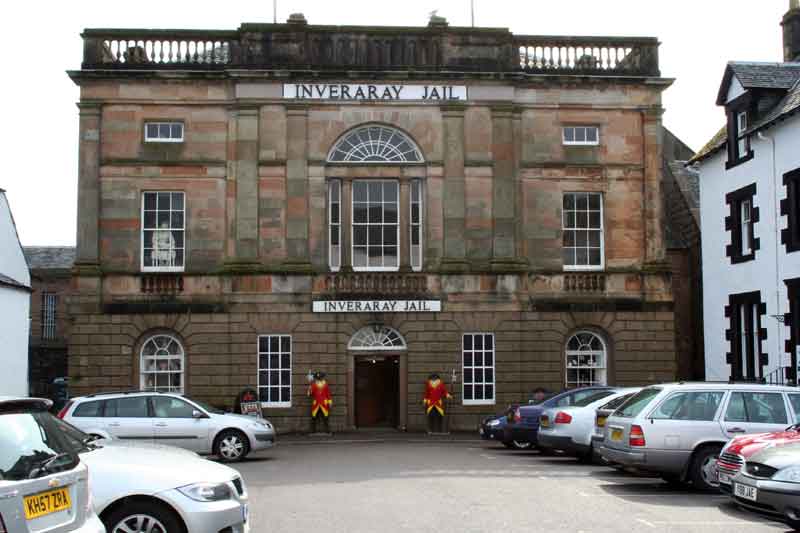
Jacobite rising
The Jacobite rising of 1745 brought a temporary halt to the road-building programme.
But by the end of the 18th century, 600 miles of roads were in some sort of repair including one which allowed Inveraray contact with other parts of the country.
While the roads were constructed for military reasons they also made life much easier for local people who simply just wanted to get on with things.
The daily lives of the people, who lived on land leased from the Duke of Argyll during the 17th and 18th centuries, are well documented.
For most, working as a tenant farmer was the only way to earn a living, although some would have worked in the castle or on the surrounding estates.
It is now possible to take a glimpse into that world.
Auchindrain Township Museum
Only six miles from Inveraray is the Auchindrain Township Museum, which has restored and re-created many of the early buildings.
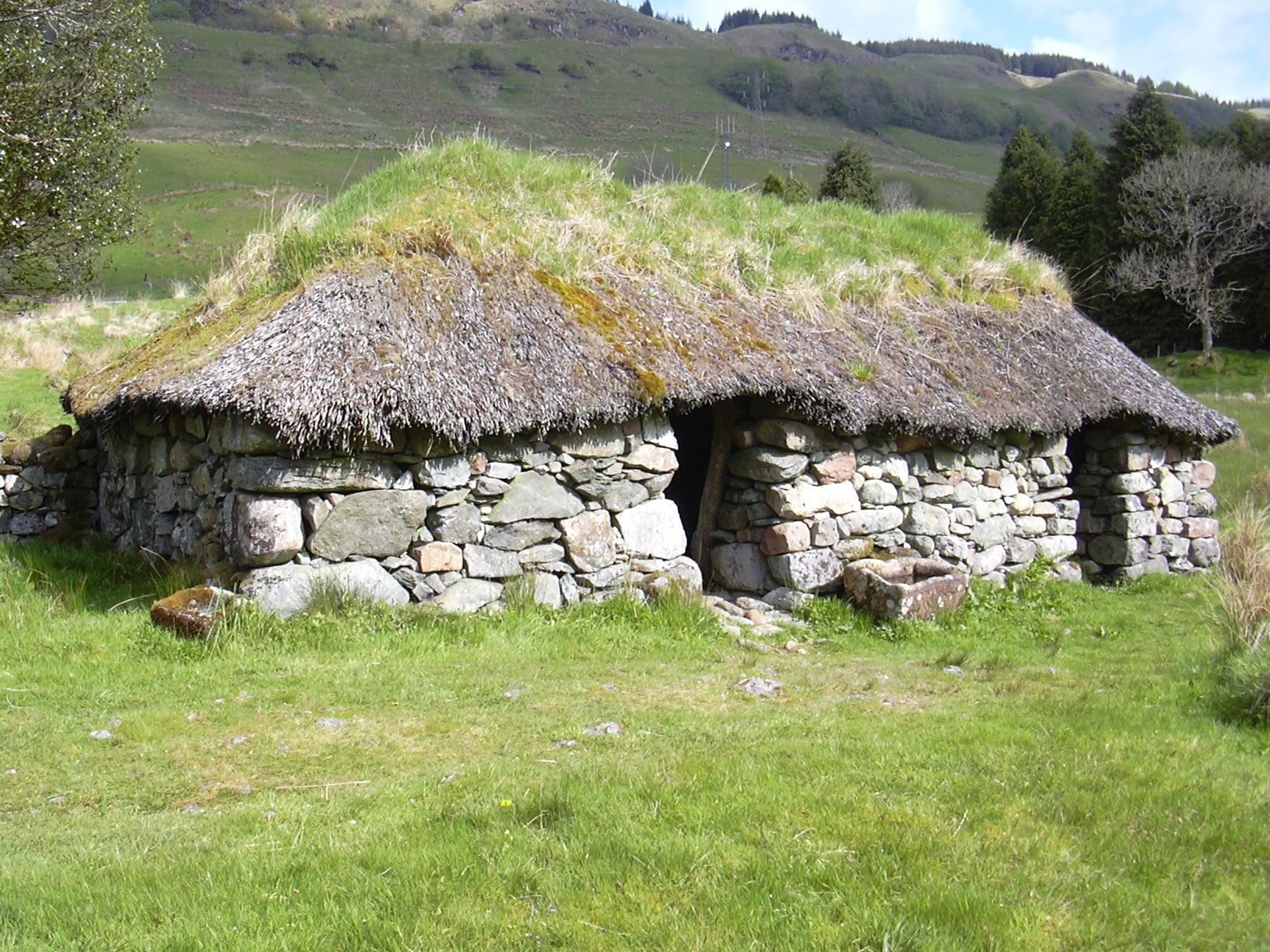
In pride of place is a restored traditional Black House, built with stone walls packed with earth.
It has a turf roof, packed earth floor and a central fireplace with no chimney.
The house was used by people and their animals.
It may seem to the casual observer that the early development of Argyll was based on royal patronage or military superiority in battle, but this was not always the case.
Growth of Gaelic writing
Argyll was an area of great importance to the growth of Gaelic writing and its development owed much to the patronage of the Campbells.
Evidence, written in Latin, of local and national events along with the making and copying of manuscripts, came from the monks who followed Columba to the Island of Iona. dating to the sixth and seventh centuries,
The first Gaelic printed book, available in Scotland, was published in Edinburgh in 1567, but crafted in Kilmartin Glen, by clergyman John Carswell.
Carswell with the support of his patron, the 5th earl also translated the Book of Common Order by John Knox into Gaelic.
Para Handy Tales
Local Inveraray man Neil Munro (1863 – 1930) is the town’s most famous writer.
His best-known work, the Para Handy Tales, told the gentle, humorous story of the Vital Spark, a River Clyde puffer (small steamboat) as it plied its trade along the west coast of Scotland.
Inveraray Castle
In 1744, the 3rd Duke decided to demolish his dilapidated castle and build a splendid new one. He wanted space for extensive landscaped gardens; he also wanted it to be out of sight of the town.
The history of Inveraray and its New town
To make way for the new building, the town, which boasted a church, tollbooth, school and 43 taverns, was over the course of 23 years slowly demolished and the residents moved to a new site where it remains today.
Today visitors to Inveraray Castle will find an eclectic mixture of Baroque, Palladian and Gothic architecture, which is dominated by “four imposing French influenced conical spires surmounting the stone castellated towers.”
Inside an unpretentious entrance leads to a stunning Armoury Hall, which boasts a ceiling of 68 feet, the highest in Scotland. It has an outstanding display of Brown Bess muskets, 16th and 17th century pole-arms, Lochaber axes and Scottish Broadswords all mounted on wall displays.
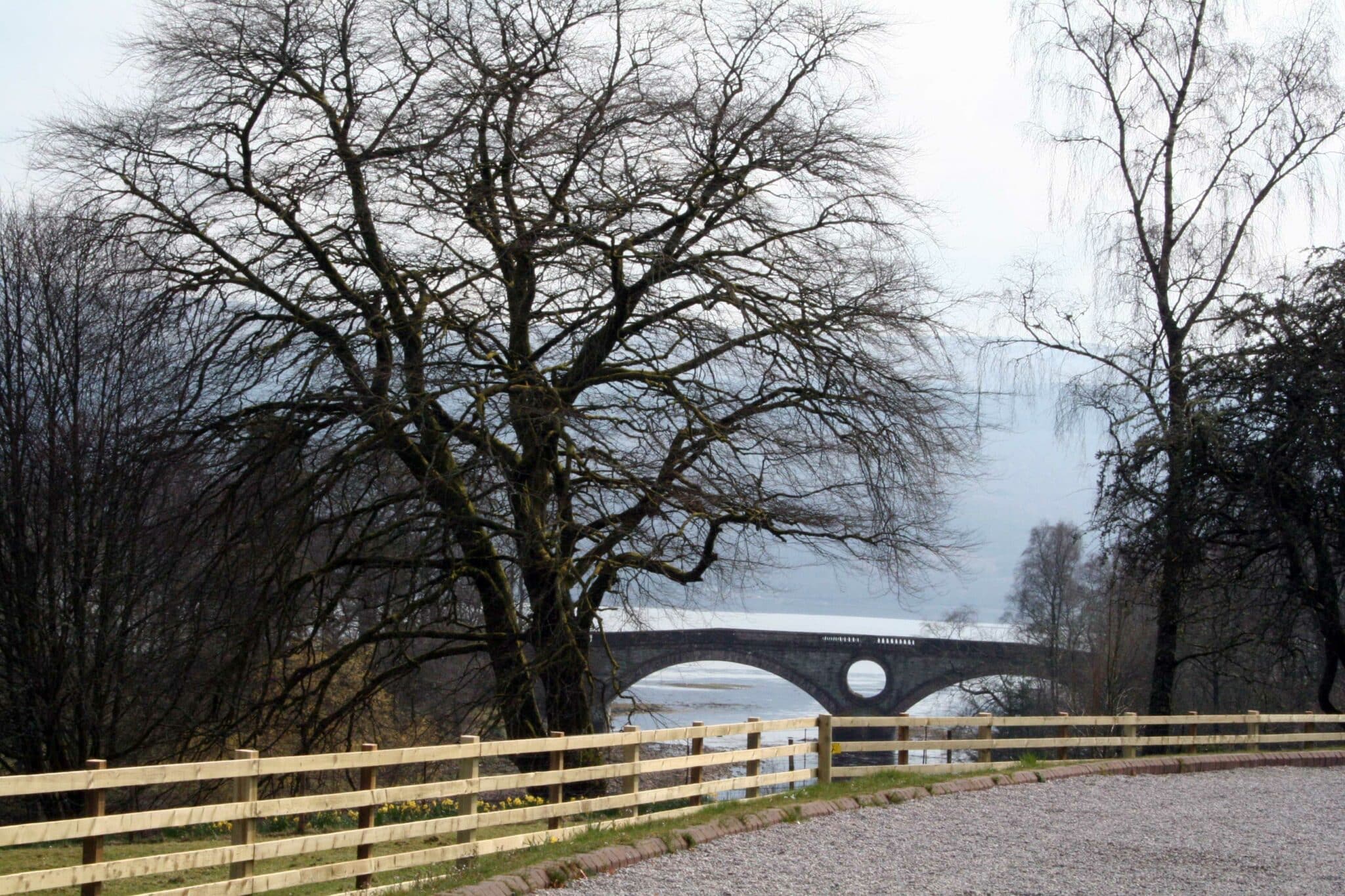
To the left of the entrance is the State Dining Room, decorated in 1784 by two French painters Girard and Guinard whose work now only survives at Inveraray.
To the right is the Tapestry Drawing Room where further decorations by Girard and an exquisite set of Beauvais tapestries greet the visitor.
Today’s MacCailein Mor, the 13th Duke, is Torquil Ian Campbell and together with the Duchess works hard to maintain Inveraray Castle not only a family home but as a proud monument to the long history of the Clan Campbell.
The Duke of Argyll divides his time between working in London and at home in Inveraray but history may well record he is best remembered as a world champion (2005) as captain of a Scotland team taking part in Nepal in the splendidly eccentric sport of elephant polo.